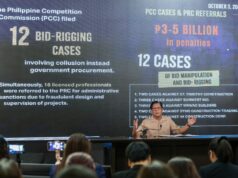Toyota: More tax relief for hybrids needed in PH
Text and photos by Kap Maceda Aguila
THE COUNTRY’S leading auto marque recently made a clarion call for the environment by pushing for greater adoption of, and enhanced government support for, its hybrid electric vehicle nameplate.
Toyota Motor Philippines (TMP) recently staged the Toyota Hybrid Electric Technology Conference to air brand-wide aspirations first announced in October 2015. The Toyota Environmental Challenge 2050 is about “striving to reduce the environmental burden attributed to automobiles to as close to zero as possible, while developing measures to contribute a positive impact on the Earth,” according to a company release.
Six challenges have been elucidated: 1. To reduce the global average CO2 emissions during operation from new vehicles by 90% from Toyota’s 2010 global level, 2. To completely eliminate all CO2 emissions from the entire vehicle life cycle, 3. To achieve zero CO2 emissions at all Toyota plants worldwide, 4. To minimize water usage and implement water discharge management based on individual local conditions, 5. To promote global deployment of end-of-life vehicle treatment and recycling technologies and systems developed in Japan, and 6. To connect nature conversation activities beyond the Toyota Group and its business partners among communities, with the world, to the future.
Obviously, since 2050 is quite a long way from today, Toyota is identifying Year 2030 as a checkpoint with specific milestones already penciled in to ascertain if the company is on track with its commitments.
The Japan-headquartered firm explains the motivation for its efforts thus: “The global average temperature continues to rise and, according to the Fifth Assessment Report of the Intergovernmental Panel on Climate Change (IPCC) Working Group, to limit the rise of the atmosphere temperature to two degrees Centigrade or lower, greenhouse gas emissions in 2050 should be reduced by 40 to 70% compared to 2010 levels.”
For TMP, among the first local steps towards a sustainable future is to push the local sales of its hybrid electric vehicle (HEV), the Prius. Already in the country for a decade, the Prius has been met with lukewarm reception from the market because of its rather expensive price tag compared to conventional internal combustion engine (ICE)-powered systems. But the Prius is said to help save the environment from one whole ton of CO2 emissions in a year.
Taken in the context of a presentation at the conference by Atty. Glynda Bathan of Clean Air Asia, the social cost seems to massively outweigh the acquisition price of fossil fuel-powered regular engines. Atty. Bathan said that the Philippines ranked 10th globally as having the highest deaths (64,000) attributable to air pollution in 2017.
Aside from this, TMP president Satoru Suzuki said that HEVs ultimately meet customer needs compared to ICE systems in terms of acquisition cost, operating cost, and user convenience. While still inferior to electric vehicles (EVs), HEVs are more readily deployable locally because of the state of the country’s infrastructure readiness — or lack thereof. It straddles the two worlds and offers the best of both, promising a happy compromise for the moment.
Mr. Suzuki averred at the sideline of the conference, “I believe it’s better for the Philippines to start from HEVs to reduce emissions and save on fuel.” He added that fiscal aid still isn’t enough for hybrids, while acknowledging “the kind of support given by government (through the Tax Reform for Acceleration and Inclusion, which cut the excise tax on hybrids by half).”
The executive, replying to a question from Velocity, maintained: “I believe it’s not enough, that’s why the current sales of the Prius very small. To increase the sales, to decrease CO2 emission, to save on energy, we need additional support.”
He insisted that, for the auto industry’s part, “We need to make an effort to sell these models (using) strategic pricing ideas.” Additionally, Mr. Suzuki reiterated that people need to be oriented on the virtues of hybrid electric vehicles. “Customers are not so familiar with hybrid technology and benefits, so we need to give enough information. Some customers still think that hybrid needs charging infrastructure,” he rued.
EVs are on the horizon, of course, but Mr. Suzuki underscored, “It’s still a long way. Hybrid first.”



